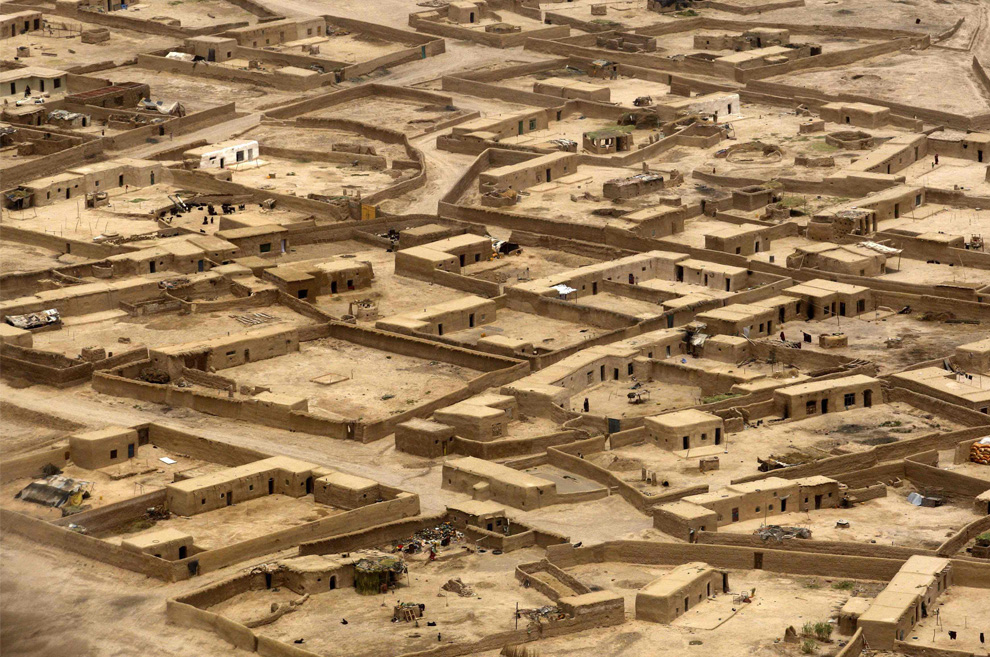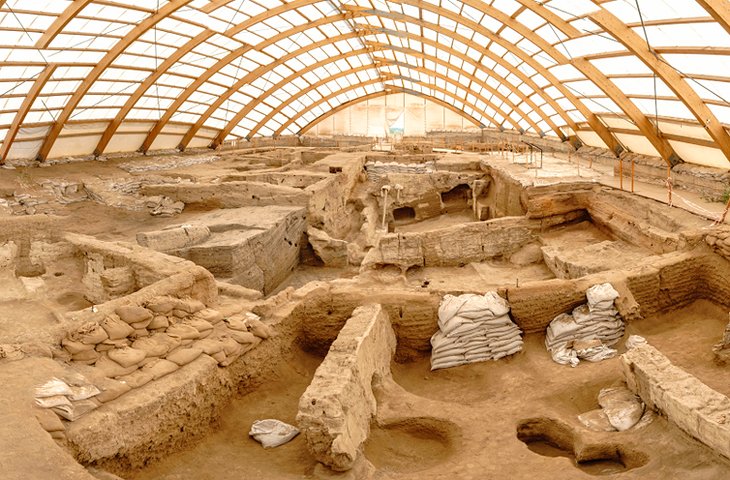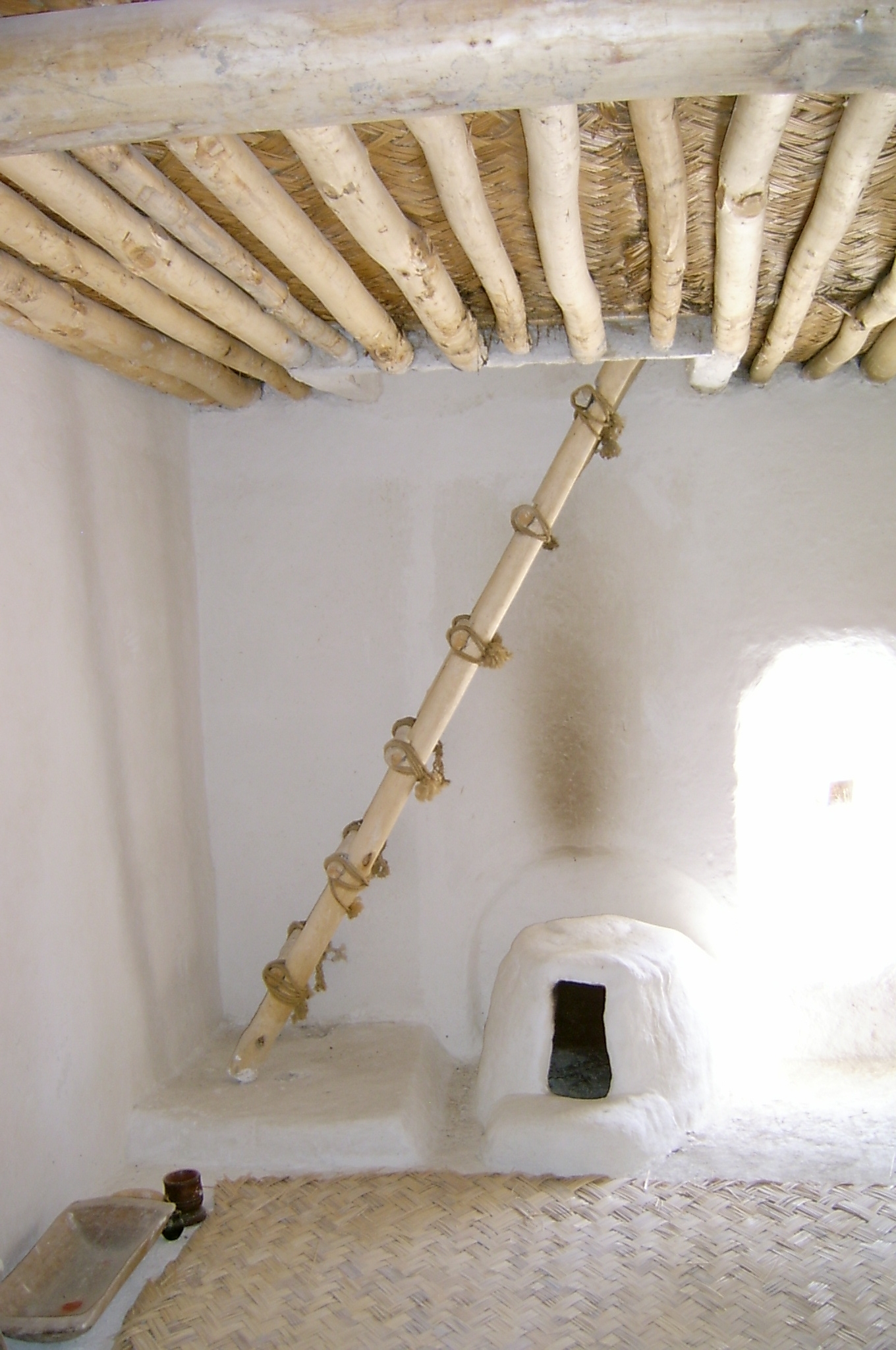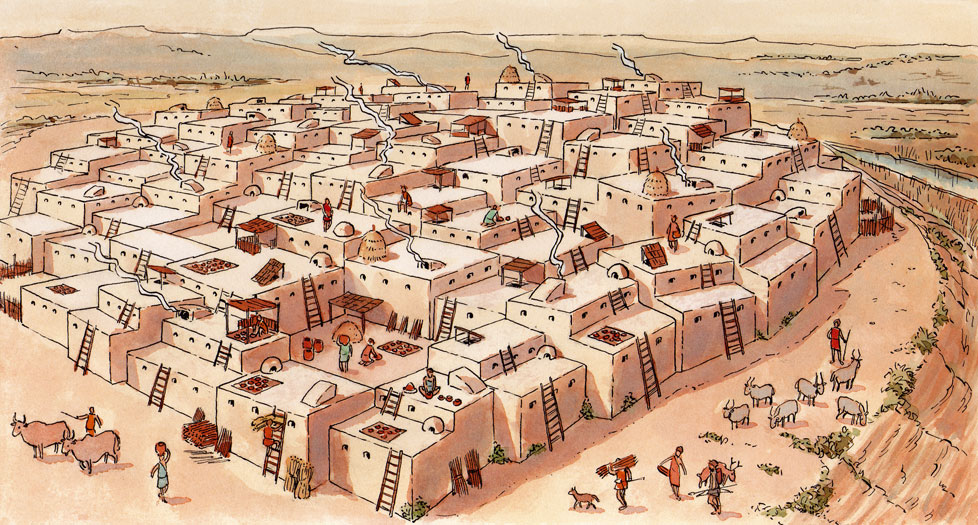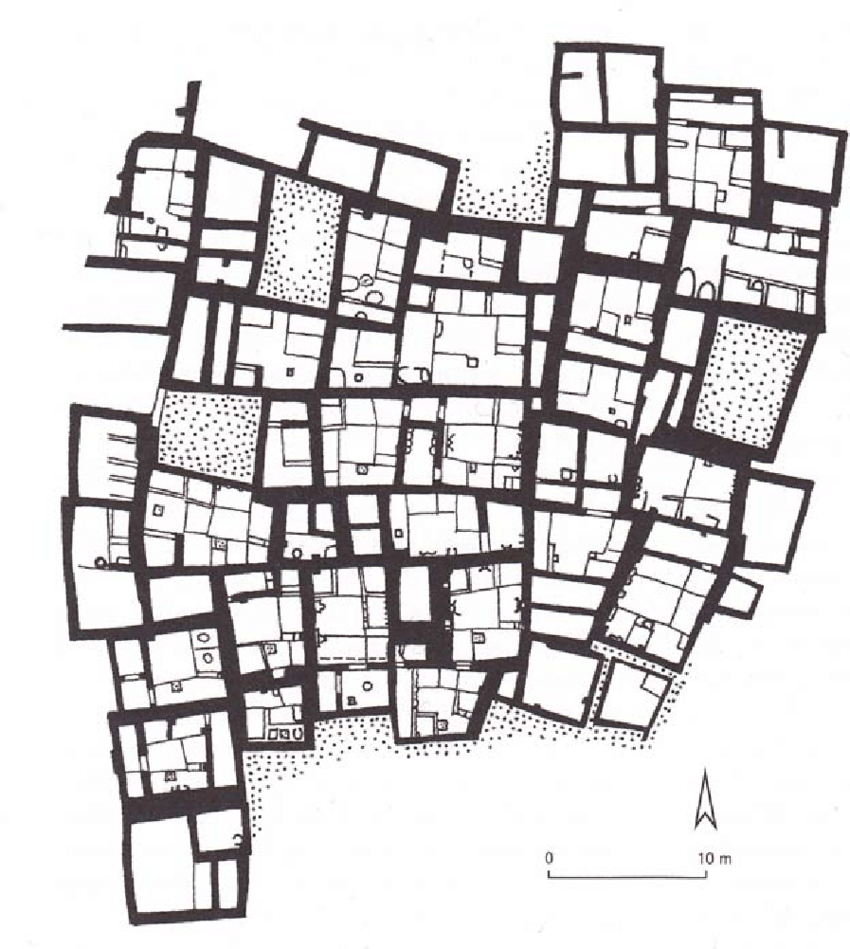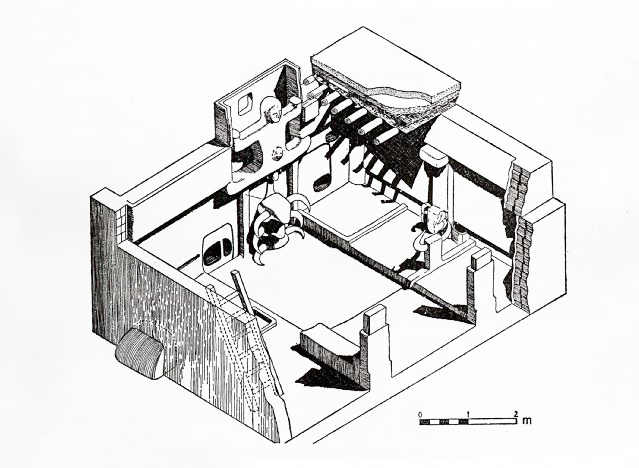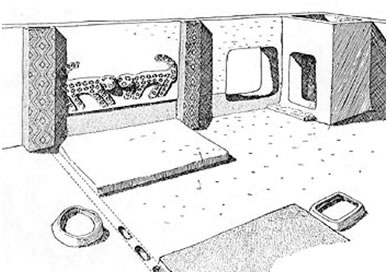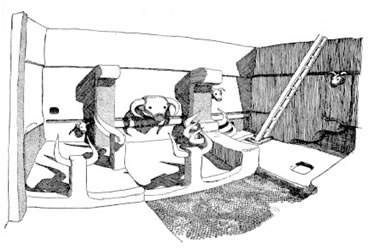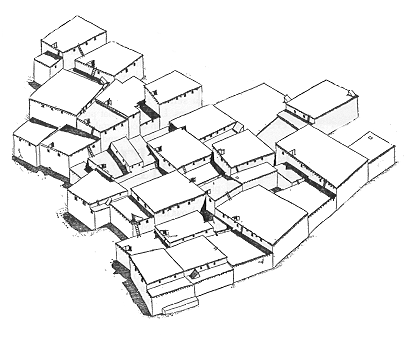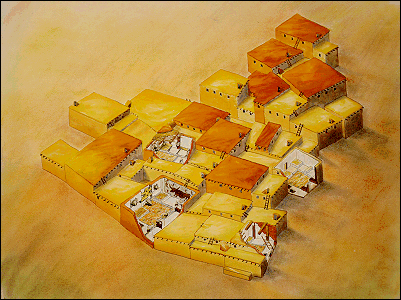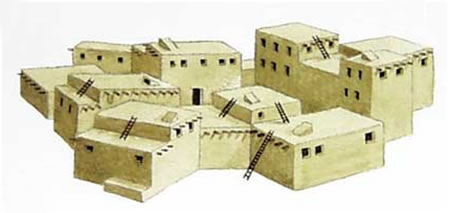L 17 |
Çatalhöyük |
type |
|
place |
A settlement dating from the Neolithic age, it is the best known ancient example of structures growing in an additive way. Houses featuring quadratic floor plans were built right next to each other. Their coordination created an extreme degree of density, as it has no street grid in the modern sense. Dwelling units were accessible through the roof by climbing a ladder. Roofs were sequenced close to each other on terraces along the slope. The homogenously spreading development lies between the river and the range of hills like a carpet, thus exposing compositional features of the pattern type. Apartments featuring one or two rooms included an average floor area of 25 m . Integrating units adhering to each other like this served defence purposes. The garden was reduced to a small courtyard as a result of extremely high density.
